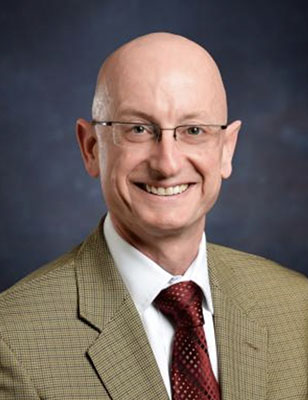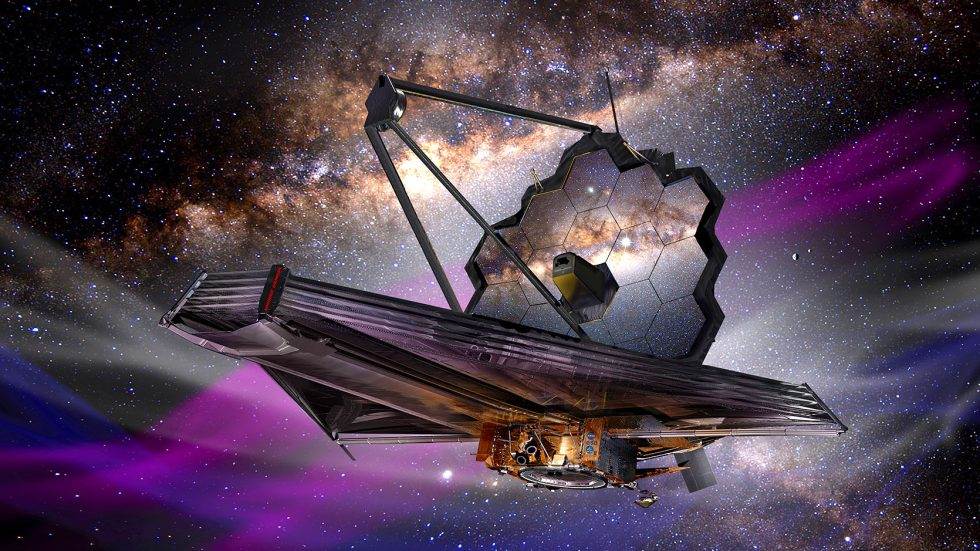Image: The James Webb Space Telescope. Art work by James Vaughan.
The National Space Society (NSS) is proud to present the Wernher von Braun Memorial Award to NASA’s James Webb Space Telescope’s science team. The award will be accepted at the NSS 41st annual International Space Development Conference® (ISDC®), which will be held on May 25-28, 2023, in Frisco, Texas, a suburb of Dallas.
Accepting the award will be Dr. Eric Smith, the Associate Director for Research in the Science Mission Directorate’s Astrophysics Division at NASA Headquarters and Program Scientist for the James Webb Space Telescope. Dr. Smith is the NASA scientist responsible for the Webb science content and is also responsible for monitoring and managing the science program for both the Webb Telescope and Hubble, ensuring their missions remain viable and true to NASA strategic objectives.

Dr. Eric Smith, James Webb Space Telescope Project Scientist
“The JWST has transformed how we look at the universe in a remarkably short period of time,” said Anita Gale, NSS CEO. “After its very nearly flawless deployment, a major feat in itself, the Webb has returned incredible science from the furthest reaches of the universe to never-before-seen details of our own solar system, with NASA coordinating research teams and partners from around the world. I can’t think of a more worthy recipient for this prestigious award.”
Launched in late 2021 after more than a decade of preparation, the JWST performed a near-flawless deployment shortly after leaving Earth orbit. With over 400 specific mechanical actions required, none of which had been tested in microgravity, this was itself an impressive achievement.
Six months later, the telescope reached its working orbit at the Sun-Earth L2 Lagrange point, a stable orbit in space well beyond that of the Moon. Once there and fully commissioned, the 21-foot (6.5) meter telescope began its record-breaking work.
The Webb operates at infrared frequencies, which is very challenging to accomplish from the Earth’s surface. Observing in infrared allows the telescope to see further and more clearly than any previous instrument of its kind. New discoveries from existing and previously undiscovered targets began to accumulate almost immediately.
The ever-growing list of Webb discoveries includes direct imaging of exoplanets and the identification of key gases in their atmospheres; tracking clouds on Saturn’s moon Titan; identifying new details in a cluster of galaxies; imaging the incredibly faint rings around Uranus; capturing the galactic merger of Arp 220; discovering sand-bearing clouds on a remote exoplanet; measuring the temperature of a rocky exoplanet; and observing galaxies seen in their earliest years, when the universe was just 350 million years old – about two percent of its current age.
“On behalf of NASA’s James Webb Space Telescope team, we are honored by this prestigious award,” said Dr. Eric Smith, associate director for research in the Astrophysics Division at NASA Headquarters and program scientist for the James Webb Space Telescope. “Webb has exceeded all expectations and captured awe-inspiring images and amazing spectra of the distant universe, objects in our solar system and everything in between that will inspire generations to come.”
The Wernher von Braun Memorial Award is given in odd-numbered years to recognize excellence in management of and leadership for a space-related project that is significant and successful and shows strong management skills and team cohesion.




















1 thought on “NSS Selects James Webb Space Telescope Team for the Wernher von Braun Memorial Award”
Well done, The telescope is a marvel of engineering, and technolgy, and has been operated with unforeseen skill. There was no period of ‘Learning the Device’, which speaks volumes as to the skill of the team. Their efforts have earned this reward, above and beyond, the exceptional quantity of press. Kudos to the award committee for being able to descern the actual work of the Astronomers/Engineers involved, and make what can only be considered an excellent choice.